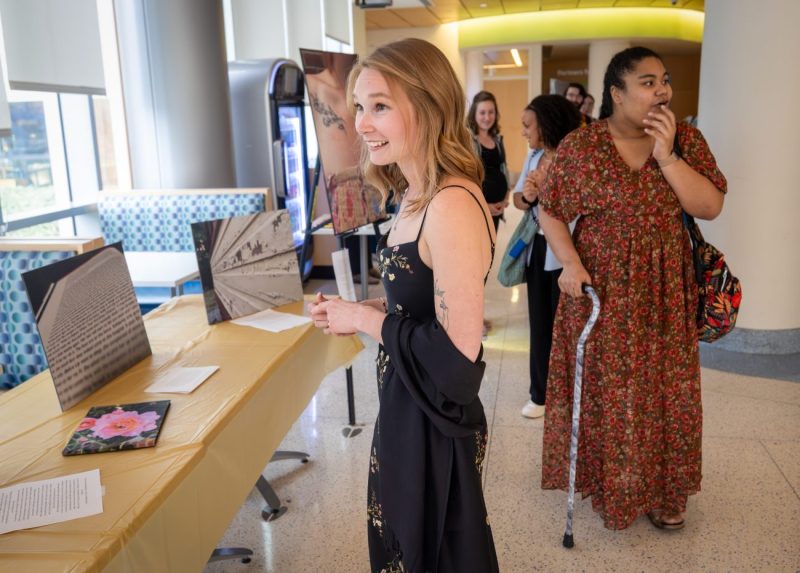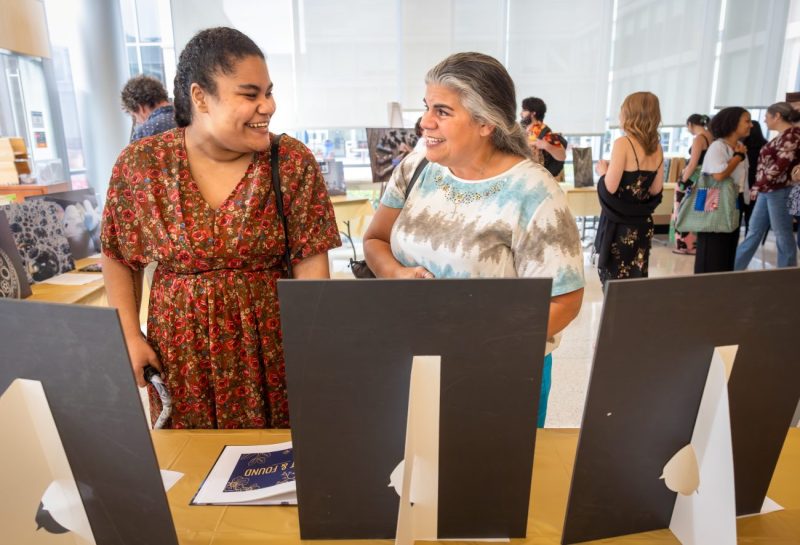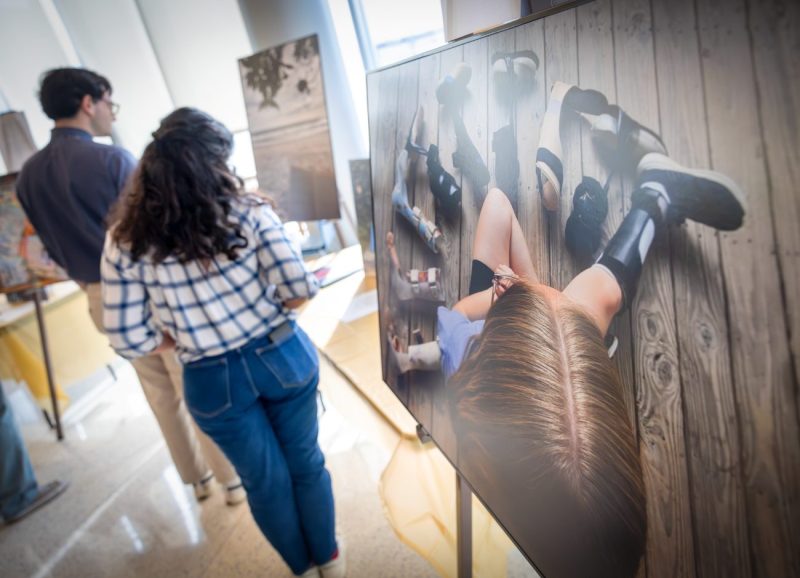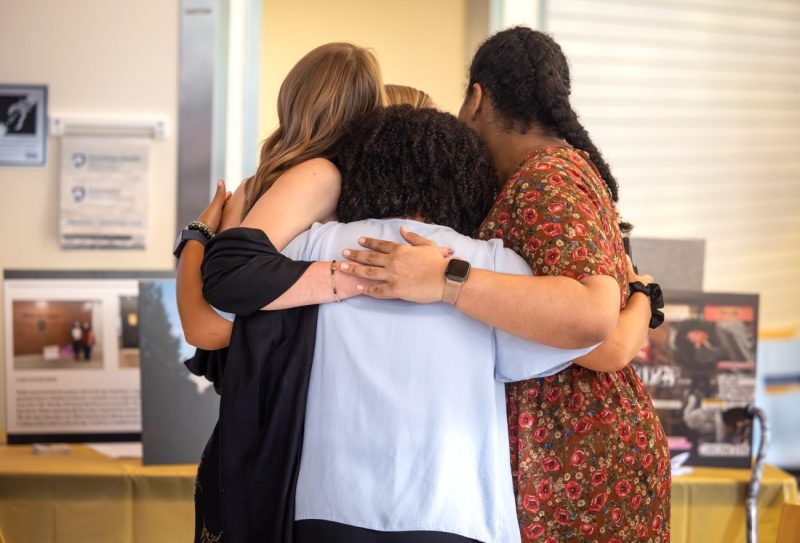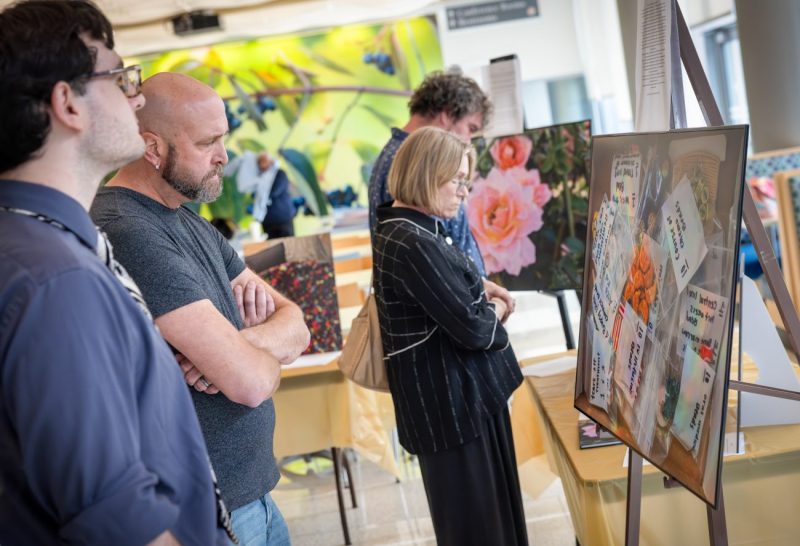
For those not directly affected by cancer, the ringing of the bell signifies triumph—a joyful sound full of finality: celebration, closure and cure.
For young survivors, however, the bell resonates differently.
It marks the end of treatment, but not the end of cancer’s influence. Survivorship is not an ending—it is the beginning of something more complex. Something quieter. Something understood by few.
This year’s Photovoice project, supported by Four Diamonds and hosted by Penn State Health Children’s Hospital Childhood Cancer Survivorship Clinic, brought together a group of young adult childhood cancer survivors and provided space to reflect on life after cancer—honestly, creatively and together collectively.
In doing so, participants expressed what many survivors feel but often struggle to articulate.
What Binds Them is Not Cancer. It’s Everything That Follows.
In just a few moments together, it became clear that their stories—though deeply personal—were connected by invisible threads: loss, identity, resilience and the quiet labor of rebuilding.
Within those threads, a collective strength emerged—a sisterhood woven through shared truth. An understanding that, while the darkest experiences may be behind them, what lies ahead remains uncertain and often isolating.
Many are still learning how to live in a world that feels unfamiliar.
This time, however, they were not navigating it alone. Through each conversation, each photo and each pause between tears, they discovered something steady: one another. A thread to hold onto— and a way forward.
The Mosaic of Their Voices Maps the Way Forward
Together, they built something powerful—not through identical experiences, but through shared emotion. Each image captured and each caption written became a tile in a larger mosaic.
Within that mosaic, a collective theme emerged.
“Maybe survival isn’t about feeling whole,” wrote Monica, a survivor of rhabdomyosarcoma diagnosed at age 2. “Maybe it’s about continuing in pieces anyway.”
Her words became a quiet refrain—an affirmation that healing is not linear, and wholeness may not look the way the world expects.
For Lily, diagnosed with leukemia at age 6, survivorship brought an unspoken pressure to express gratitude—even as fear lingered beneath the surface.
“I spent a decade trying to convince myself that cancer was a blessing in disguise,” she said. “But there are so many aspects that have gone unexplored.”
Joining the Photovoice group shifted something internally.
“Tonight is the first time I’ve met these women in person,” Lily shared at the project’s closing reception. “But I feel inextricably connected to them.”
That connection—a deep, shared understanding—became the emotional current running through the project.
Kayla, a journalist by training, was initially hesitant to participate. Vulnerability did not come easily. But through photography, a new outlet emerged.
“I’ve always loved writing, but lately it’s been hard,” she said. “Photovoice gave me art. It gave me this group. It gave me space to feel understood.”
Gabriela, diagnosed with Hodgkin’s lymphoma at 17, missed prom, missed graduation, missed everything—but she did not miss the fear.
“What seemed like a cold turned out to be a tumor,” she said. “Cancer took everything—my plans, my hair, my sense of certainty.”
Even after treatment ended, the weight of what was lost remained. Through Photovoice, she transformed her experience into art—and into connection.
“These photos are proof that even in the most brutal battles, we can rise again and continue forward.”
Living with the Scars—and for Those Who Can’t
For many, cancer became a silent companion carried into adulthood. Survivors faced chronic pain, identity shifts, isolation and grief—all while being praised for their “strength.”
Often, that strength felt more like anxiety, depression or survivor’s guilt.
“I used to think I had to earn my survivorship,” Lily said. “Now I understand—there’s no hierarchy of suffering. There’s just what we carry.”
Monica echoed the group’s quiet truth.
“We’re the lucky ones. We made it through. But some days, it doesn’t feel that way.”
Photovoice became more than an art project. It became a lifeline—a reminder that their stories matter. Not only for themselves, but for the children who did not get to grow up.
Their stories bear witness. They invite others to give—to care—because not everyone escapes cancer.
Hope, Rewritten—Together
“They are no longer just survivors of childhood cancer,” said Dr. Smita Dandekar. “They are artists, writers, educators, researchers and dreamers. They are builders of a new narrative—one that tells the whole truth, holds space for grief and makes room for joy.”
“There’s a world where I didn’t live to see moments like this,” Lily said. “But I’m here. We’re here. And we’re still becoming.”
Healing does not happen in isolation.
It happens when stories are shared. When voices are heard.
When someone looks at your scars and says:
“I see you.”
From scattered memories to shared meaning.
From silence to story.
From survival to becoming.
Survivorship is messy. It is beautiful. It is brave.
And in the hands of these women, survivorship becomes something more—
Something worth living for.

